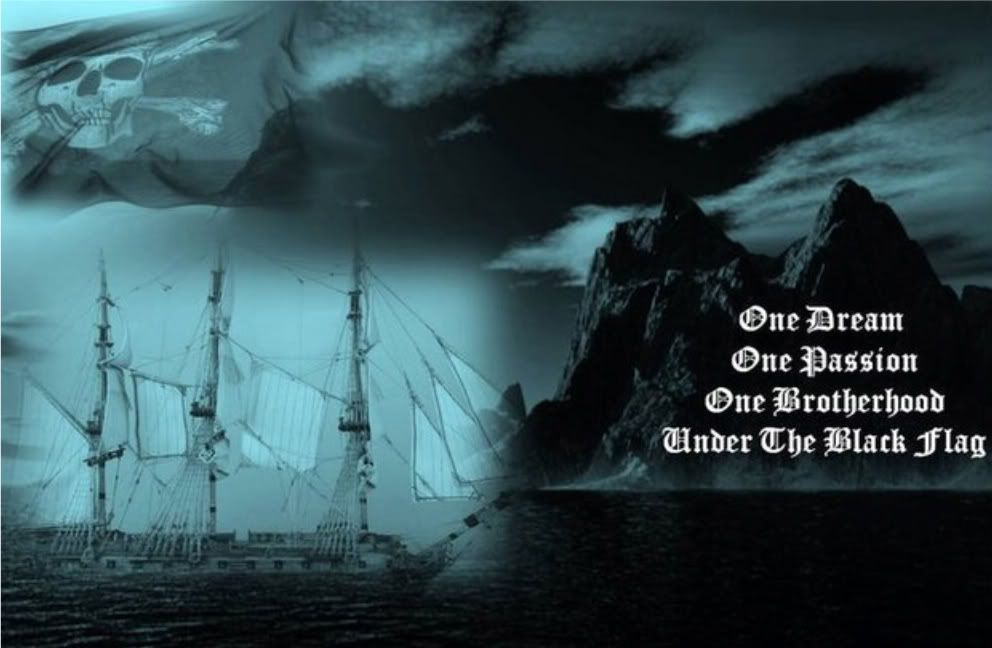William Paulsgrave
biographies, william paulsgrave 4:26 π.μ.
Paulsgrave Williams, who rose to become one of the most
infamous pirate captains, was an unlikely candidate to join
this maritime revolt: a middle-aged silversmith from a wealthy
family, with a wife and two young children. His father was a
wealthy merchant and Rhode Island’s attorney general; his
mother was descended from the Plantagenet kings of
England.
But as told in The Republic of Pirates, the trajectory of
Williams life was altered at age 11, when his father died. His
mother remarried a Scots exile, and moved from Newport to
Block Island, then a center of smuggling and black market
activity. One of his sisters married a leading associate of
Captain Kidd; another married a man believed to be the
nephew of a retired Rhode Island buccaneer.
infamous pirate captains, was an unlikely candidate to join
this maritime revolt: a middle-aged silversmith from a wealthy
family, with a wife and two young children. His father was a
wealthy merchant and Rhode Island’s attorney general; his
mother was descended from the Plantagenet kings of
England.
But as told in The Republic of Pirates, the trajectory of
Williams life was altered at age 11, when his father died. His
mother remarried a Scots exile, and moved from Newport to
Block Island, then a center of smuggling and black market
activity. One of his sisters married a leading associate of
Captain Kidd; another married a man believed to be the
nephew of a retired Rhode Island buccaneer.
Inspired, perhaps, by Block Island’s outlaw ethos, in 1715 Williams formed a partnership with Sam Bellamy, and
set out in a small boat for Florida, where a powerful hurricane had wrecked the annual Spanish treasure fleet.
They probably intended to try their hand at salvaging treasure from the shallow wrecks, but discovered others had
beaten them to it.
Unwilling to return to New England empty-handed, Bellamy and Williams decided to “salvage” treasure from
vessels that were still afloat. By March 1716 they were at the head of a gang of 50 men, looting small merchant
vessels in the environs of the Yucatan peninsula from a pair of large sailing canoes. One year later they were
leading a band of nearly 250 – including at least 25 former slaves – with a sleek sloop-of-war and an 28-gun
flagship, the Whydah, that was more than a match for most of the naval frigates in the region.
Even after months of tropical piracy, Williams continued to wear a powdered gentleman’s wig, his captives later
reported, which contrasted with his strikingly tanned skin. He commanded the Marianne, a well-armed sloop, her
hull still gaily painted the blue and yellow colors of her original French owners. Like other pirates, his crew was of
mixed origin: thirty Brits, five Frenchman, five Africans, and an Indian; all were apparently equal members of the
crew. Pirate vessels may have been one of the most racially tolerant places in the Americas.
As they sailed north in late March 1717, Bellamy and Williams became separated in fog. They had a contingency
plan: to rendezvous at Damariscove Island, Maine on or around May 20. Williams visited his mother and sisters
on Block Island, staying ashore for a number of hours, possibly a day or two, and probably disposed of some of
his plunder. He then made his way to Damariscove and, after waiting two weeks for Bellamy (who was, by then,
dead), returned to the pirate base at Nassau. He was present there in February 1718 when Vincent Pearse of
HMS Phoenix visited the island, but apparently fled to Africa prior to the arrival of Woodes Rogers.
set out in a small boat for Florida, where a powerful hurricane had wrecked the annual Spanish treasure fleet.
They probably intended to try their hand at salvaging treasure from the shallow wrecks, but discovered others had
beaten them to it.
Unwilling to return to New England empty-handed, Bellamy and Williams decided to “salvage” treasure from
vessels that were still afloat. By March 1716 they were at the head of a gang of 50 men, looting small merchant
vessels in the environs of the Yucatan peninsula from a pair of large sailing canoes. One year later they were
leading a band of nearly 250 – including at least 25 former slaves – with a sleek sloop-of-war and an 28-gun
flagship, the Whydah, that was more than a match for most of the naval frigates in the region.
Even after months of tropical piracy, Williams continued to wear a powdered gentleman’s wig, his captives later
reported, which contrasted with his strikingly tanned skin. He commanded the Marianne, a well-armed sloop, her
hull still gaily painted the blue and yellow colors of her original French owners. Like other pirates, his crew was of
mixed origin: thirty Brits, five Frenchman, five Africans, and an Indian; all were apparently equal members of the
crew. Pirate vessels may have been one of the most racially tolerant places in the Americas.
As they sailed north in late March 1717, Bellamy and Williams became separated in fog. They had a contingency
plan: to rendezvous at Damariscove Island, Maine on or around May 20. Williams visited his mother and sisters
on Block Island, staying ashore for a number of hours, possibly a day or two, and probably disposed of some of
his plunder. He then made his way to Damariscove and, after waiting two weeks for Bellamy (who was, by then,
dead), returned to the pirate base at Nassau. He was present there in February 1718 when Vincent Pearse of
HMS Phoenix visited the island, but apparently fled to Africa prior to the arrival of Woodes Rogers.
He was last seen off Sierra Leone in April 1720, serving as an officer aboard a pirate ship commanded by the notorious French pirate, Olivier La Buse.













